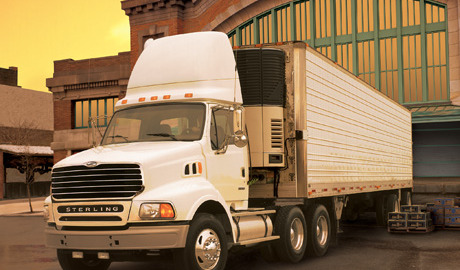Emerging Trends in Wholesale Distribution
Emerging Trends in Wholesale Distribution
In the supply chain network of distribution from manufacturer to retailers, wholesalers play a major role and occupy the middle position between manufacturers and convenience store brokers or retailers. This group was never emotionally attached to the products which it was distributing to retailers or distributors as its services were limited to caretaker duties. With growing trend of large format retailer stores with nationwide chains which are setting up their own warehousing and distribution networks it is increasingly becoming a challenge for wholesalers to retain their importance in the distribution chain.
With growing number of convenience stores turning into food and beverage distribution outlets the supply chain networks are becoming more complex to maintain this demand. While customers are seeking better products at lower prices, manufacturers’ cooperatives and farmers are demanding better prices for their products which are squeezing the wholesale distributor from both sides.
The wholesale distribution sector has annual sales figure of $5 trillion which has fallen by a trillion since 2011 and is expected to grow at a compounded rate of 6 percent in forthcoming years. During next five years the revenue of distributors will grow by 50 percent while retailers will grow by 40 percent as the national economy has grown by 30 percent irrespective of the tough economic conditions. Though a few key industries like tourism and automobile have slowed down due to increase in gas prices the retail industry has remained steady.
Challenges in today’s competitive markets for wholesalers
Manufactures are seeking profitable ways to get their products into c-stores and want to keep distributors to the minimum. In this endeavor they are taking the help of grocery wholesale distributors and other convenience store distributors which move the goods directly to the retailers. Customers are also demanding more customized delivery systems to have better products which reach them at home at a competitive price. Global competition from low cost products is making it difficult for retailers to store local made products at low prices if the cost of distribution is high.
How to get products into c stores in time
The biggest challenge before manufacturers and distributors is to get their products into their preferred stores in time before customers are given a better alternative at a lower price. Wholesalers play an important part in this exercise by being able to identify the right storage facilities and finding the right distributors for their products. To combat this issue there are convenience store brokers associations and distributor groups who take the responsibility of marketing and distribution of products from manufacturers to retailers. They get the latest products and display them before consumers at convenience stores and grocery stores directly which are a part of their member distribution chain and then maintain regular supply depending on demand.
Technological challenges
Managing inventory and storage along with regular replenishing of stocks and being able to have updated information about stocks available in the warehouse is a challenge most wholesale face in their business. While this can now be managed with information technology the wholesaler has to identify the right solution which will be appropriate for his current and future needs. The right software solution should be able to manage customer orders, track inventory and generate shipping assignments for trucks that move out to distributors. Wholesalers also have to invest in software for automating standard tasks like making packing lists for pallets moving out of the warehousing along with drawing up invoices and comparing them with customer order lists to avoid mistakes.
Challenge from large retailers
Now that fuel prices have stabilized distributors are safe from one challenge to now face large retailers like Walmart, Safeway, Costco and others who are bypassing them to directly take delivery of products from manufactures. They have set up centralized collection centers wherein manufacturers supply their truckloads of produce which is repacked and distributed to the retailers’ stores which are spread across the nation. The distribution of these products from collection centers can be done either by these retailers themselves or through third party distributors.
Challenges of export/import
The wholesalers take responsibility for export of goods across Japan, Canada, Mexico, China and locations across Europe which has suffered due to economic upheavals and natural disasters. The long trucking dispute between US/Mexico also led to loss of several million as traffic from both sides of the border came to a standstill during this period.
Emerging trends in wholesale distribution
In spite of these challenges the wholesale distribution sector has been able to manage industry requirements and adapted itself to requirements of business and industry. While technologically wholesale distributors are able to improve their efficiency external challenges are forcing them to adopt new trends to improve bottom-line and manage growth.
Distribution channels driven by demand
This refers to distribution which is driven by demand as goods move down quickly through the supply chain due to ready demand. In today’s customer driven markets the manufacturers do not push goods towards buyers and retailers manage their inventories based on consumer demand. This helps in allocation of products across a widespread geographical area as manufactures and wholesalers are now aware of pockets which have demand for their products. Channel partners comprising of wholesalers, distributors, brokers and retailers share data about consumer demand which helps maintain inventory supplies.
Direct interaction with customers
With the assistance of internet, wholesale distributors are able to improve their business activities as they are able to directly connect with retailers and customers. The innovative wholesalers are managing supply chains by using internet to interact with buyers to understand changing trends and using collaborative tools like virtual trade-shows. Online business environment requires wholesalers to use their website as promotional tool for lead generation and sharing information.
Now warehouse management systems are sophisticated tools which constantly help top wholesalers to stay ahead of competitors through effective strategy. The national association of wholesale distributors works with more than 100 wholesalers to access and analyze business information which can help managers to make business decisions which will meet unique challenges and provide long term solution.






